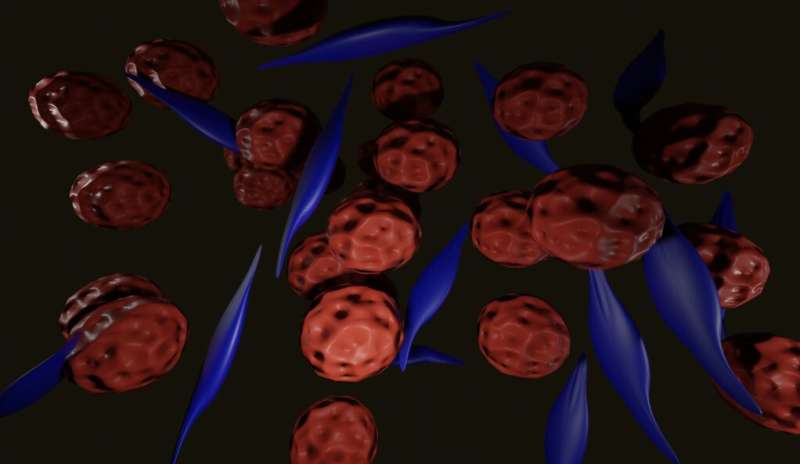
Researchers have identified a molecular mechanism that drives the progression of uveal melanoma (UM), an often lethal eye cancer in adults.
The finding, published in the journal Nature Communications, may offer an opportunity to develop treatments to suppress earlier a lethal type of tumor that spreads to other parts of the body. It also represents a breakthrough in understanding cancer biology, linking two hallmarks of cancer—chromosomal instability (errors in chromosome segregation during cell division) and epigenetic alterations (changes in gene regulation)—that interact to advance disease progression.
UMs form within eye tissue, often in older adults and people with fair skin. There are an estimated 2,500 cases of UM every year in the United States.
The most common therapies for UM are surgery and radiation. However, once UM spreads to other organs, chances of survival are small.
“Up to half of UM patients are prone to developing liver metastasis, which is usually lethal,” said Mathieu Bakhoum, an assistant professor of ophthalmology at the Yale School of Medicine and co-first author of the study. “The reasons why only a group of patients with certain tumor characteristics develop metastasis, and the mechanisms driving metastasis, are unknown, yet crucial to developing target therapies to this lethal disease.”
The study’s principal investigators, in addition to Mathieu Bakhoum, are Ashley Laughney from Weill Cornell Medical School, Samuel Bakhoum from Memorial Sloan Kettering Cancer Center, and Paul Mischel from Stanford University. Jasmine Francis from Memorial Sloan Kettering is co-first author.
The researchers integrated a variety of genetic and other analyses at the single-cell level to demonstrate that UM progression is propelled by the loss of Polycomb Repressive Complex 1—proteins that regulate gene expression. This loss leads to aberrant gene expression and errors in the way chromosomes segregate during cell division. Eventually, this leads to an inflammatory response that makes the tumor more aggressive.
Source: Read Full Article